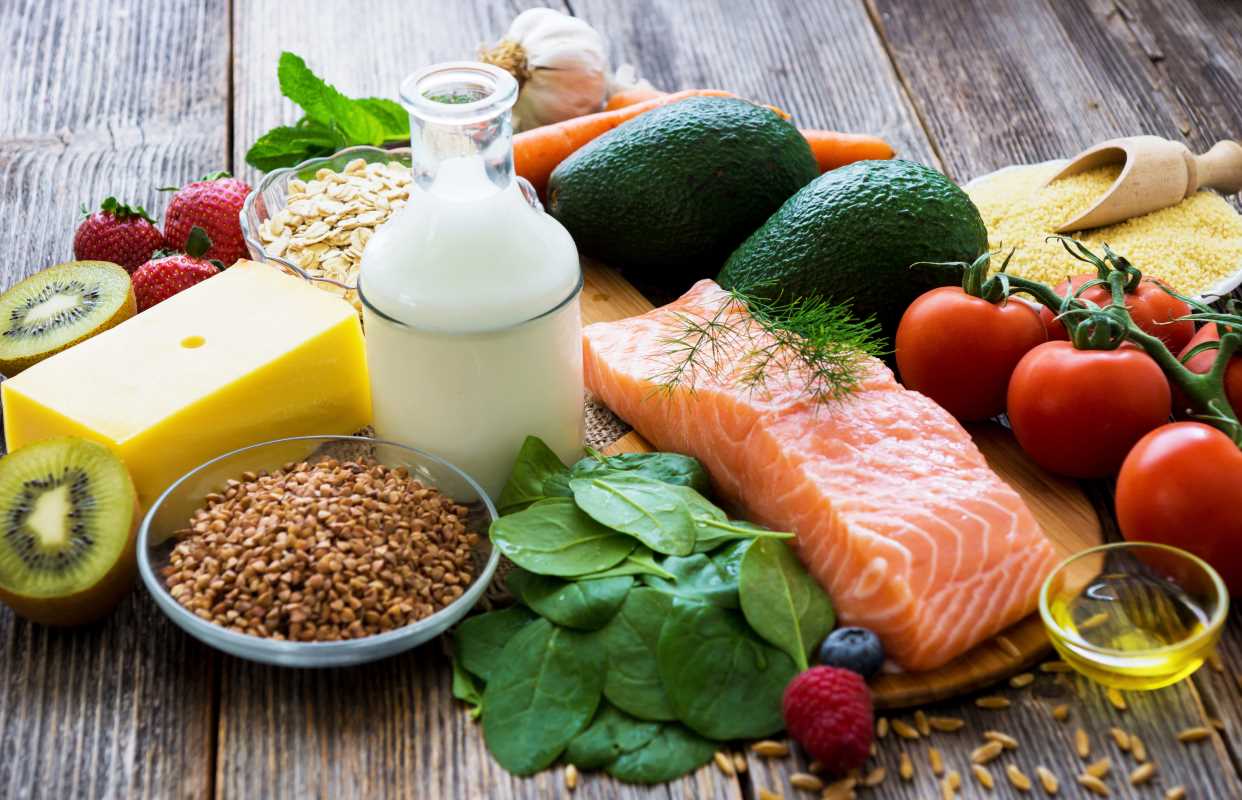Cholesterol is a term that pops up often in health discussions, but how much do you truly know about it? While cholesterol plays a critical role in your body’s functions, having levels that are too high can pose serious risks to your health. Unchecked, it can lead to life-altering conditions like heart disease and stroke. The good news? High cholesterol is manageable with the right knowledge and proactive steps. Let's explore what cholesterol is, signs that could indicate something is off, and actionable strategies to maintain healthy levels.
What is Cholesterol?
Cholesterol is a waxy, fat-like substance found in your blood. It’s essential for building healthy cells, making hormones, and producing vitamin D. Your liver naturally produces all the cholesterol your body needs. However, cholesterol is also present in the foods you eat, and excess amounts can lead to health problems.
Cholesterol is typically divided into three categories:
- HDL (High-Density Lipoprotein): Often referred to as “good cholesterol,” HDL helps transport cholesterol away from the arteries to the liver, where it can be expelled.
- LDL (Low-Density Lipoprotein): Known as “bad cholesterol,” LDL can build up on the walls of your arteries, forming plaques that may narrow or block blood flow.
- Total Cholesterol: This is the overall measure of LDL, HDL, and 20% of triglyceride levels in your blood.
While your body requires a certain amount of cholesterol to function, having too much LDL cholesterol or an imbalance between LDL and HDL can lead to serious complications.
Signs of High Cholesterol
One of the most alarming aspects of high cholesterol is how unnoticeable it often is. It’s earned the nickname “the silent condition” because it rarely presents clear symptoms until significant damage to your arteries has occurred. Nonetheless, there are warning signs and health issues linked to elevated cholesterol levels that warrant attention:
Early Symptoms
- Chest pain or angina: This may occur if cholesterol buildup has narrowed or blocked the coronary arteries, reducing blood flow to the heart.
- Discomfort in the extremities: Pain, numbness, or cramping in the legs, feet, or hands can signal peripheral artery disease caused by plaque accumulation.
- Xanthomas: The development of yellowish patches or nodules on the skin, particularly around the eyes, elbows, or knees, may point to high cholesterol.
- Fatigue or shortness of breath: Reduced oxygen supply due to narrowed arteries may leave you feeling winded during exercises or even routine activities.
Advanced Warning Signs
Unfortunately, for many people, the first sign of high cholesterol is a severe event, such as a heart attack or stroke. These occur when plaques rupture and form blood clots, which can block oxygen-rich blood from reaching vital organs.
Why Regular Testing Is Key
Due to the lack of obvious symptoms, routine screenings are essential. A blood test called a lipid panel measures LDL, HDL, total cholesterol, and triglycerides. Adults aged 20 and over should get their cholesterol levels checked every 4 to 6 years. If you have risk factors like obesity, diabetes, or a family history of high cholesterol, testing may need to happen more frequently.
Tips to Manage High Cholesterol
While high cholesterol can feel overwhelming, it’s a condition you can take control of through conscious lifestyle choices. Below are detailed, practical tips to help lower cholesterol levels and promote overall heart health.
1. Adopt a Heart-Healthy Diet
What you eat plays a major role in determining your cholesterol levels. A balanced diet rich in heart-smart choices can go a long way toward reducing LDL levels and increasing HDL. Here’s what to focus on:
- Increase dietary fiber: Foods like oats, barley, lentils, apples, and carrots are packed with soluble fiber, which binds with cholesterol and helps remove it from your bloodstream.
- Load up on vegetables and fruits: These are low in calories and high in nutrients, antioxidants, and fiber, contributing to lower cholesterol levels.
- Choose healthy fats: Replace saturated fats from red meat or full-fat dairy with unsaturated fats found in foods like avocados, nuts, seeds, and olive oil.
- Avoid trans fats: These harmful fats are often labeled as "partially hydrogenated oils" and are found in processed goods like cookies, margarine, and fried foods.
- Add heart-boosting foods: Ingredients like fatty fish, flaxseeds, and chia seeds are rich in omega-3 fatty acids, which can increase HDL cholesterol and reduce triglycerides.
Practical tip? Start small by swapping out butter for olive oil or replacing a bag of chips with a handful of almonds.
2. Exercise Regularly
Physical activity is one of the best ways to raise HDL cholesterol and improve overall cardiovascular health. Aim for at least 150 minutes of moderate-intensity exercise per week. Activities like brisk walking, hiking, swimming, biking, or dancing are all excellent choices. Not a fan of structured exercise? Incorporate activity into your daily routine by gardening, walking your dog, or taking the stairs at work.
Strength training is another beneficial option, as muscle-building exercises may help reduce LDL while boosting HDL levels. Try weightlifting or resistance band workouts a couple of times per week to complement cardio.
3. Achieve and Maintain a Healthy Weight
Carrying extra weight—in particular, excess belly fat—is closely linked to higher LDL cholesterol and an increased risk of heart disease. Shedding even 5% to 10% of your body weight can lead to noticeable improvements in your cholesterol profile. Focus on gradual, sustainable changes to your diet and lifestyle to achieve lasting results.
4. Quit Smoking
Smoking has a profound impact on your cholesterol levels and heart health. It lowers HDL levels, damages blood vessels, and contributes to plaque buildup in the arteries. The benefits of quitting are nearly immediate. Within weeks of putting out your last cigarette, HDL levels begin to recover, and your risk of heart disease starts to decline.
5. Limit Alcohol Consumption
Moderate alcohol intake has been associated with higher HDL cholesterol levels, but it’s essential to maintain moderation. This means no more than one drink per day for women and two for men. Overindulging not only raises triglycerides but also contributes to weight gain and liver problems.
6. Consider Plant Stanols and Sterols
Plant stanols and sterols are substances found in small amounts in fruits, vegetables, nuts, and seeds. Consuming food products fortified with these compounds, such as certain margarine spreads or orange juice, can help block the absorption of cholesterol in the intestine.
7. Take Medications if Necessary
Sometimes, lifestyle modifications alone aren’t enough, especially if you have genetic factors contributing to high cholesterol. If prescribed, medications like statins or PCSK9 inhibitors can help lower LDL cholesterol and reduce your risk of cardiovascular events. Always discuss with your healthcare provider to find the best approach for your individual situation.
The Role of a Proactive Approach
Maintaining optimal cholesterol levels requires ongoing awareness and action. Early intervention is critical, particularly if you’re dealing with other risk factors like high blood pressure, diabetes, smoking, or obesity. By keeping an eye on your numbers and proactively addressing lifestyle changes, you’ll reduce your chances of facing severe complications.
Think of your routine check-ups as preventive maintenance. Just as you wouldn’t ignore the oil light in your car, skipping cholesterol tests could lead to trouble down the road. Remember, the benefits of early detection include:
- Identifying risks before they become dangerous.
- Developing a personalized plan for diet, exercise, and other interventions.
- Reducing the need for more aggressive treatments, like surgery or intensive medications.
Closing Thoughts
High cholesterol doesn’t have to mean high stress. Armed with the right information, tools, and motivation, you can take charge of your heart health. Small adjustments to your diet, exercise regimen, and daily habits can bring significant long-term benefits. Think of these changes as investments in your future self, ensuring you can lessen your risk of heart disease, feel better physically, and stay active in the years to come.
Above all, remember that you don’t have to tackle this alone. Consult with your healthcare team to create a plan that suits your unique needs and lifestyle. Heart health is a lifelong commitment, but every positive step you take makes a meaningful difference. Start today, and give your heart the care it deserves.
 (Image via
(Image via





